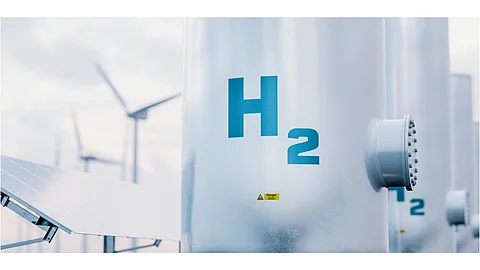

bp exits Australia's 26 GW green hydrogen AREH project to refocus on fossil fuel growth
It follows the company selling its solar and wind assets as part of a broader retreat from low-carbon investments
Its departure follows other majors like Fortescue, Shell, and Iberdrola retreating from green hydrogen projects due to high costs and low demand
Global oil and gas behemoth bp has announced plans to exit the Australian Renewable Energy Hub (AREH) that is designed to generate 26 GW of wind and solar power capacity for green hydrogen and ammonia production.
The 26 GW project targets to produce around 1.6 million tons of green hydrogen or 9 million tons of green ammonia annually in Pilbara, Western Australia, for local and international supply.
Previously known as the Asian Renewable Energy Hub, the AUD 30 billion AREH is expected to take 10 years to construct. In 2022, bp acquired a 40.5% stake in the project and followed it up with another 15% share from Macquarie that reportedly exited the project in 2024. According to bp’s website, the company has a 63.57% stake in the AREH.
Various media reports referred to a company spokesperson to state that bp wants to save its resources to grow its upstream oil and gas business instead, and also focus on the downstream business. It will work with partners – InterContinental Energy and CWP Global – to ensure safe and efficient transition of operatorship.
InterContinental Energy Chief Executive Alexander Tancock reportedly pledged to take the project to the next level post bp’s departure, whose presence played a vital role in advancing the project.
Earlier this month, bp announced the sale of its onshore wind energy business with 1.3 GW capacity in the US, where the regime is tightening the noose around renewable energy while pivoting to fossil fuels. LS Power’s Clearlight Energy is purchasing this portfolio.
“We have been clear that while low carbon energy has a role to play in a simpler, more focused bp, we will continue to rationalize and optimize our portfolio to generate value,” said bp’s EVP for Gas and Low Carbon Energy, William Lin.
These divestments are aligned with bp’s strategy to cut down spending on its low-carbon business, instead investing $10 billion/year through 2027 in oil and gas. It has also put its 100% stake in British solar power developer Lightsource bp on sale for $20 billion (see BP Seeking Buyers To Sell Stake In Solar Developer Lightsource BP).
Meanwhile, Australia’s Fortescue Metals Group has decided not to pursue its Arizona Hydrogen Project in the US and the PEM50 Project in Gladstone, Australia, following a detailed review. The US policy shift from low-carbon energy is the reason it won’t be going ahead with the Arizona project.
These aren’t the only companies to pause their investments in green hydrogen. Iberdrola, ArcelorMittal, Repsol, Shell, Origin Energy, and Neste are also on the list, according to a Reuters report, citing high production costs and weak demand for this renewable energy-powered fuel.
These investor retreats from green hydrogen projects, which are majorly planned to be powered by solar and wind facilities, will also see a drop in planned renewable energy capacity globally.
